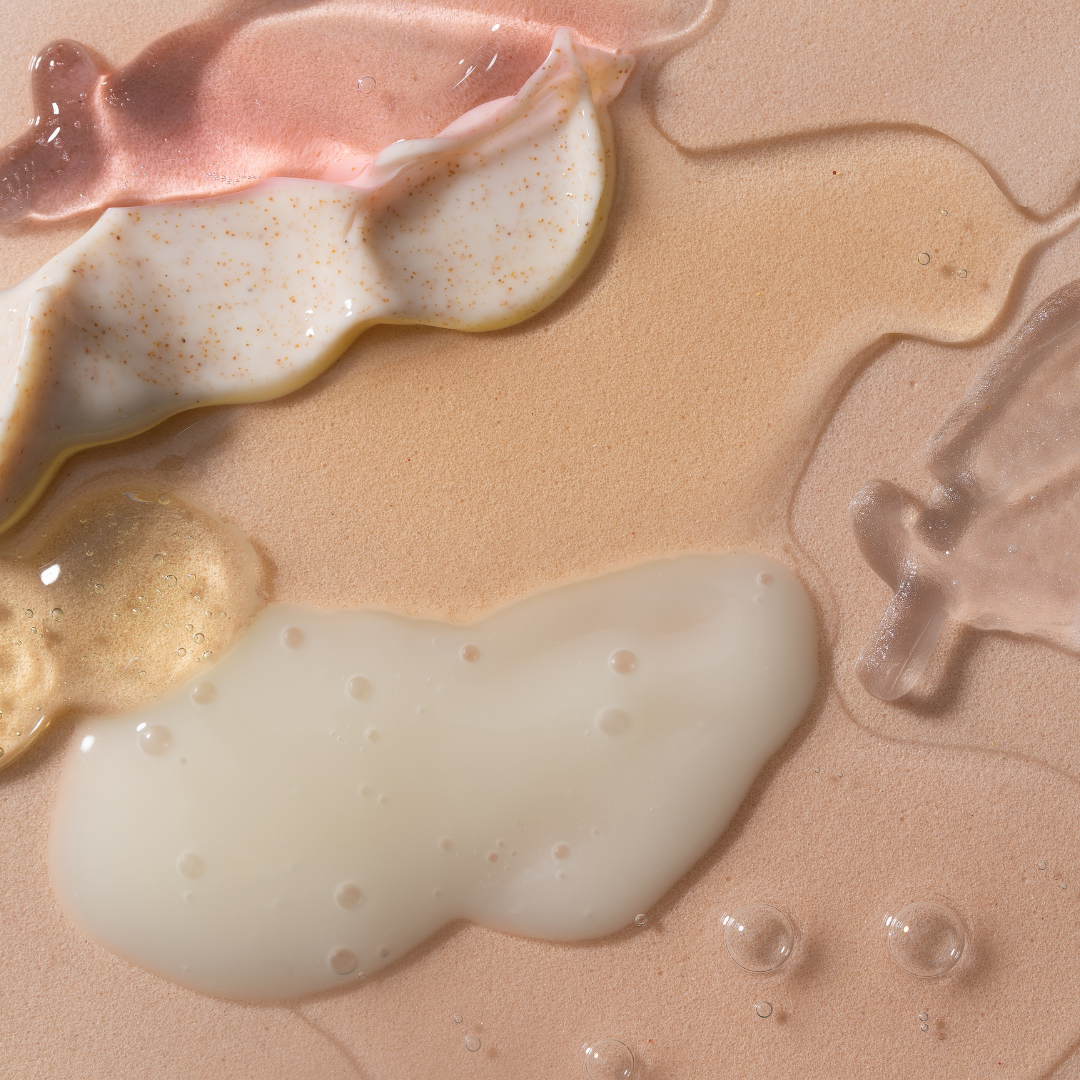A Guide to Choosing the Safest Baby Skincare Products.
As a mom, you’d do anything to keep your baby safe! We research car seats, agonize over the best first foods, and triple check the temperature of their bath water with our elbows. But what about their skincare?
Baby skin is thinner and more delicate than ours, meaning it absorbs ingredients more easily- both the good and the bad. And let’s be honest: the baby care aisle can be overwhelming, especially for a first time mom. So many brands slap words like natural, gentle, or hypoallergenic on their labels, but does that actually mean anything? Not always.
Greenwashing is so prevalent today and these businesses have become much better at doing it. I know I'm not alone in saying that I've been fooled by these greenwashed products and not only in skincare!. But also today, we’re breaking down how to read ingredient labels like a pro and avoid falling for greenwashing tactics so you can confidently choose the safest skincare for your little one and yourself!
So let's get started, shall we?
1. Ignore the Front of the Bottle
This first one is easy and I hope you're already applying this but yep, you heard that right. The front of the packaging is pure marketing. Terms like organic, clean, non-toxic, and natural are not regulated in skincare (especially in the United States). A brand can call itself natural while still containing synthetic fragrances, harsh preservatives, or hormone-disrupting chemicals.
*Instead of trusting the branding, flip that bottle over and check the ingredient list. That’s where the truth is.
2. Know the Ingredients to Avoid
Some of the biggest red-flag ingredients in baby skincare include:
- Fragrance (Parfum) – This one is sneaky. “Fragrance” can be a mix of hundreds of undisclosed chemicals, some of which may contain phthalates (linked to hormone disruption). If a product does contain fragrance, look for one that specifies essential oil-based or naturally derived.
- Phenoxyethanol – A common preservative that can cause skin irritation and is not recommended for babies under 3 months.
- Parabens (Methylparaben, Propylparaben, etc.) – Used as preservatives but have been linked to hormone disruption.
- Sodium Lauryl Sulfate (SLS) & Sodium Laureth Sulfate (SLES) – These foaming agents can strip the skin’s natural barrier and cause irritation.
- Petroleum-Based Ingredients (Mineral Oil, Petrolatum, Paraffin) – Often used to create a barrier on the skin, but they can trap bacteria and prevent the skin from breathing.
- Formaldehyde-Releasing Preservatives (Quaternium-15, DMDM Hydantoin, etc.) – Found in some lotions and washes, these ingredients slowly release small amounts of formaldehyde, a known carcinogen.
Doing the research over my years of motherhood (and this entry), I'm shocked by how we even allow these nasty, harmful chemicals to not "sneak" but knowingly allow them into the most sensitive skincare.
3. Look for Ingredients That Work With Baby’s Skin
Instead of focusing on what to avoid, let’s talk about what to look for. The best baby skincare products contain ingredients that actually nourish and support delicate skin:
- Botanical Oils – Jojoba, almond, and apricot kernel oil are deeply nourishing without clogging pores.
- Shea Butter & Mango Butter – Natural emollients that keep skin soft and hydrated.
- Aloe Vera – A gentle hydrator with soothing properties.
- Colloidal Oatmeal – Calms irritation and helps with sensitive skin conditions like eczema.
- Chamomile & Calendula Extracts – Naturally anti-inflammatory and soothing for rashes or redness.
When a product contains real, recognizable ingredients, your baby’s skin gets the benefits without unnecessary additives.
4. Be Wary of “Organic” and “Natural” Claims
Just because something says organic doesn’t mean it’s 100% free from harmful ingredients. Always check for certifications, such as:
- USDA Organic – This label means at least 95% of the ingredients are certified organic.
- EWG Verified – Products with this label meet strict safety standards.
- NSF Organic – Requires at least 70% organic ingredients with strict formulation guidelines.
Even so, If a brand calls itself natural but still contains synthetic preservatives or artificial fragrances, it’s a red flag.
We're in the early stages of growing Mama's Meadow, but pursuing certifications like USDA Organic and eczema-safe approval is part of our long-term vision to build even more trust and transparency around our products.
5. Choose Skincare Brands That Value Transparency
At the end of the day, a truly safe baby skincare brand will be transparent about their ingredients, sourcing, and formulation process.
That’s exactly why we created Mama’s Meadow- because as moms, we shouldn’t have to second-guess what we’re putting on our baby’s skin. We keep it simple, using only the most nourishing, organic ingredients (and nothing else). No fillers, no toxins, no hidden junk- just pure, gentle care for your little one.
If you’re looking for truly safe, effective baby skincare, start with Clara’s Comfort, our all-natural soothing balm designed for eczema, dry skin, and everyday baby care. It’s made with shea butter, calendula oil, jojoba oil, and colloidal oatmeal. Every ingredient is chosen with your baby’s delicate skin in mind.

Choosing the best skincare for your baby doesn’t have to be complicated. Flip the bottle, read the ingredients, and trust brands that prioritize transparency over marketing- whether it's our products here at Mama's Meadow or another. Your baby’s skin deserves the best- and you deserve peace of mind!
Want to learn more about how to care for your baby’s skin naturally? Follow us on Instagram (@MamasMeadow) for more tips, behind-the-scenes, and real-mom insights!
Your friend,
J




